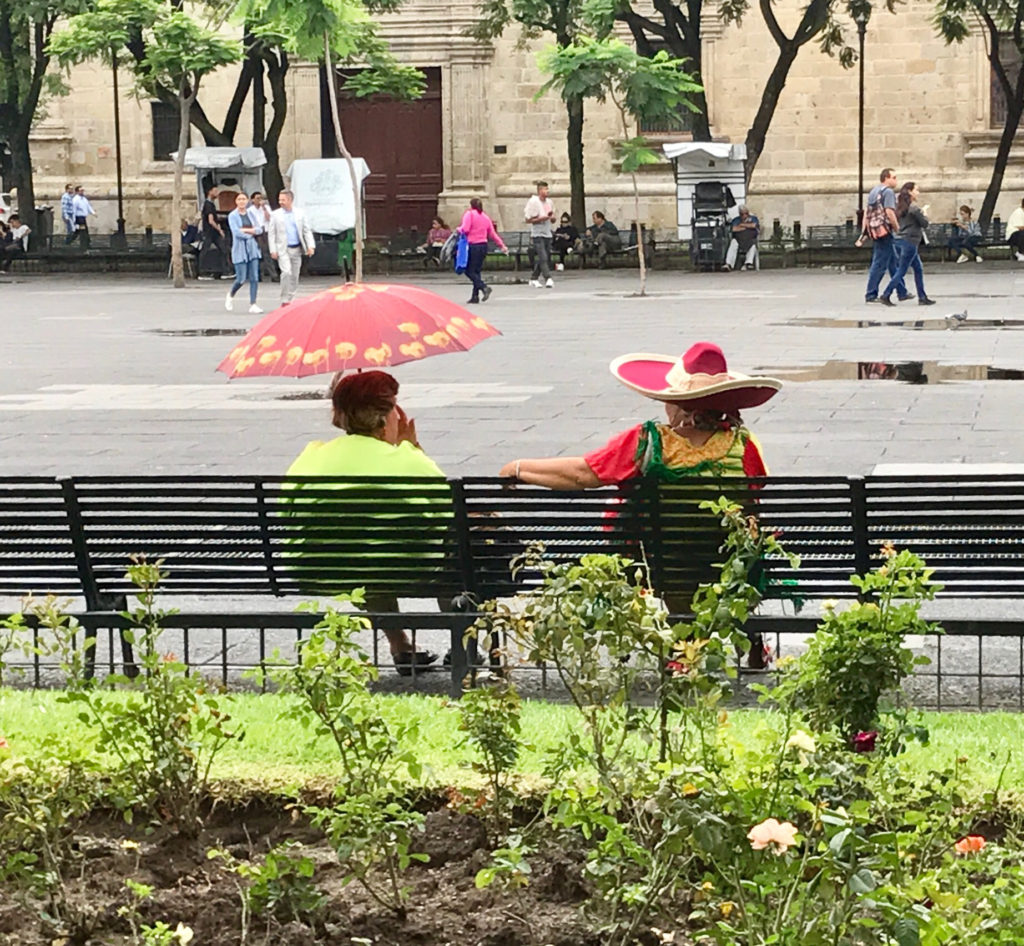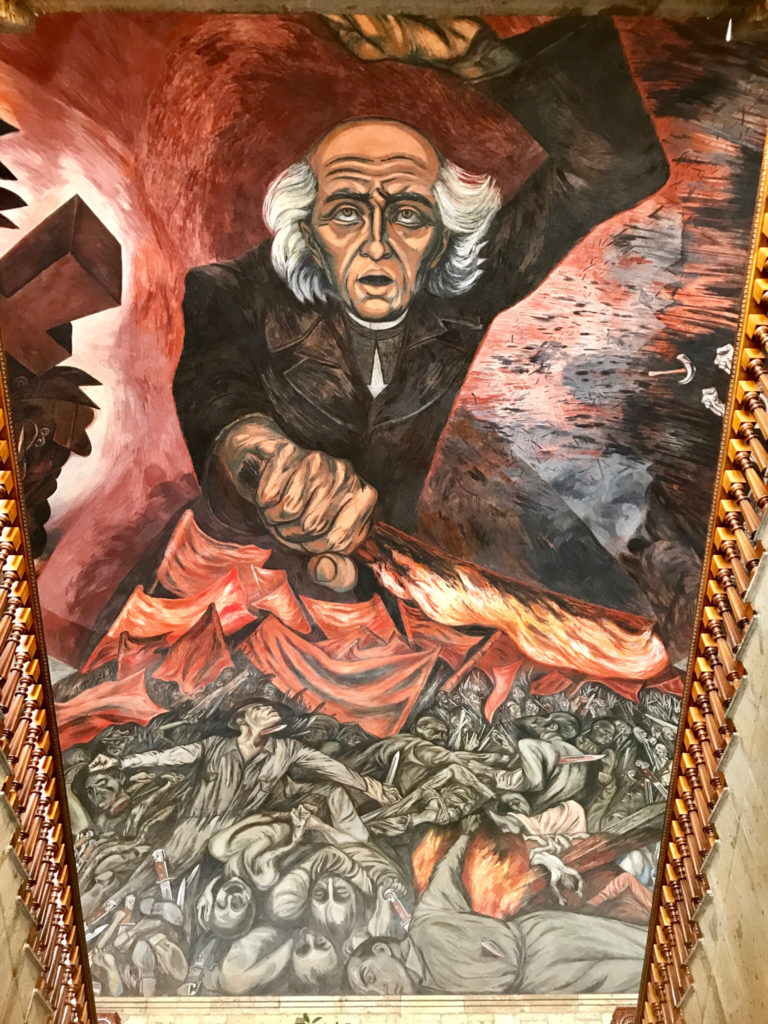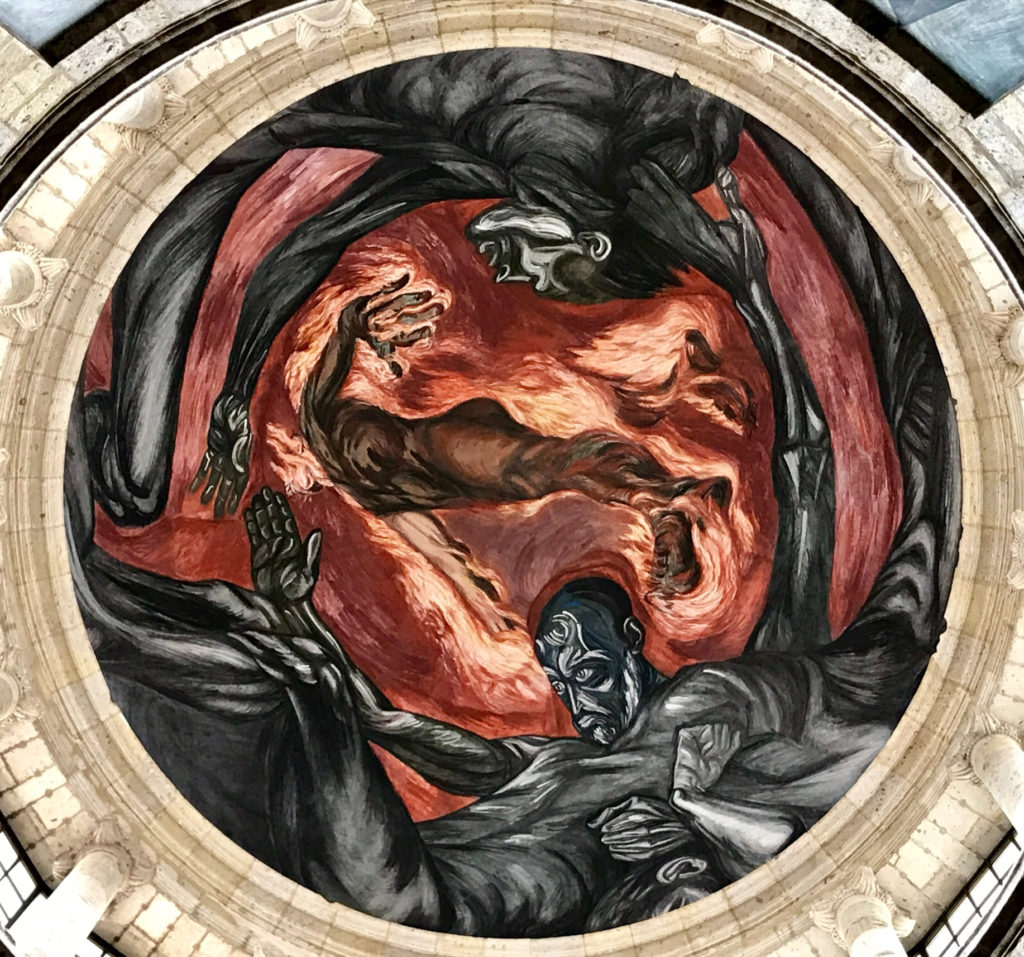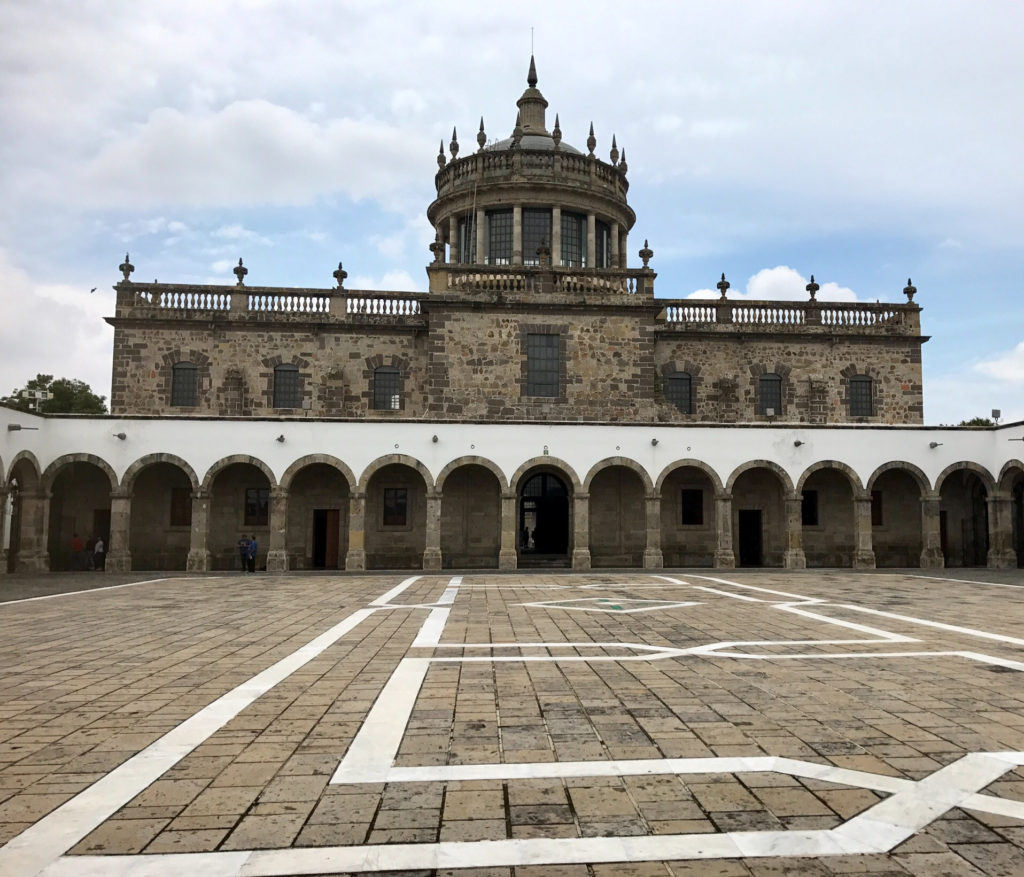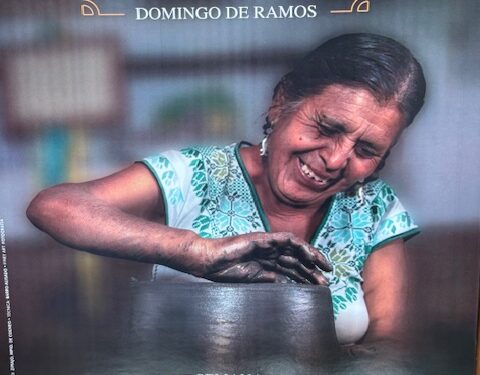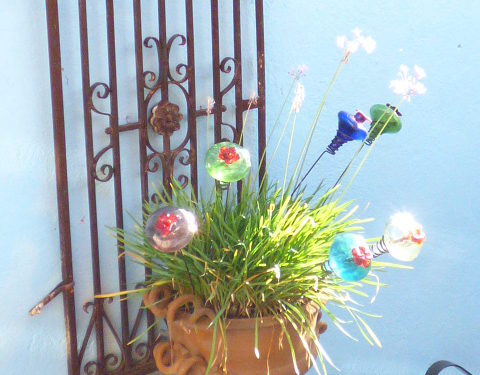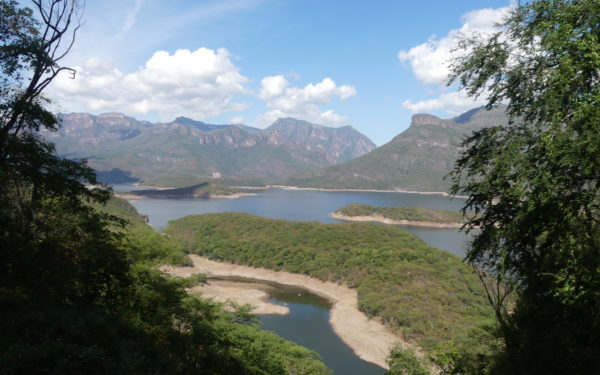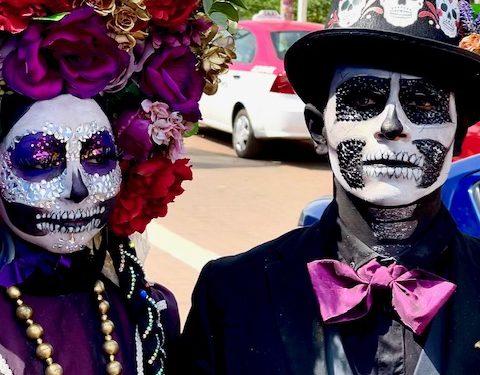Guadalajara – September 1st, 2017

Early this morning we left LA on a red-eye for a few days of exploration in Guadalajara, via Mexico City….easy flight and connections. We landed were met by our driver and taken to our hotel beautifully modern, but away from the city center.
Checked in, had to wait for our room, so proceeded to the club for a light breakfast……I quickly spotted chilaquiles and the best fresh fruit we have had in a while, the croissants were buttery and tasty the coffee dark and strong.
Our room ready we retired for a well deserved mid morning nap exploring will have to wait a bit longer…..
Guadalajara is the largest city of the Mexican state of Jalisco, it is Mexico’s fourth most populous municipality and is the 10th largest city in Latin America in population. The city is named after the Spanish city of Guadalajara, the name of which came from the Andalusian Arabic wād(i) l-ḥijāra, meaning “river/valley of stones”. The city’s economy is based on services and industry, especially information technology, with a large number of international firms having regional offices and manufacturing facilities in the city.
Guadalajara is a cultural center of Mexico, considered by most to be the home of mariachi music and host to a number of large-scale cultural events such as the Guadalajara International Film Festival, the Guadalajara International Book Fair, and globally renowned cultural events which draw international crowds. It is home to the C.D. Guadalajara, one of the most popular football clubs in Mexico “Chivas”.
The city was established in five other places before moving to its current location.
In 1542, records indicate that 126 people were living in Guadalajara and, in the same year, the status of city was granted by the king of Spain and the coat of arms issued is still in used today. Guadalajara was officially founded on February 14, 1550 in the Valley of Atemajac.
In 1559, royal offices for the province of Nueva Galicia were moved from Compostela to Guadalajara, as well as the bishopric. Construction of the cathedral was begun in 1563. In 1575, religious orders such as the Augustinians and Dominicans arrived, which would make the city a center for evangelization efforts.
Refreshed after a short nap we hailed a taxi and off to the old historic centered we headed.
The historic downtown of Guadalajara is the oldest section of the city, where it was founded and where the oldest buildings are. It centers on Paseo Morelos/Paseo Hospicio from the Plaza de Armas, where the seats of ecclesiastical and secular power are, east toward the Plaza de Mariachis and the Hospicio Cabañas. The Plaza de Armas is a rectangular plaza with gardens, ironwork benches and an ironwork kiosk which was made in Paris in the 19th century.
Within Guadalajara’s historic downtown, there are many squares and public parks: Parque Morelos, Plaza de los Mariachis, Plaza Fundadores, Plaza Tapatia, Plaza del Agave, Parque Revolucion, Jardin del Santuario, Plaza de Armas, Plaza de la Liberacion, Plaza Guadalajara and the Rotonda de los Hombres Ilustres, the last four of which surround the cathedral to form a Latin Cross.
We easily strolled through all the plazas, enjoying the colorful wave of humanity crossing our path.
Construction began on the Metropolitan Cathedral in 1558 and the church was consecrated in 1616. Its two towers were built in the 19th century after an earthquake destroyed the originals. They are considered one of the city’s symbols. The architecture is a mix of Gothic, Baroque, Moorish and Neoclassical The interior has three naves and eleven side altars, covered by a roof supported by 30 Doric columns.
The Palace of the State Government is in Churrigueresque and Neoclassical styles and was begun in the 17th century and finished in 1774. The interior was completely remodeled after an explosion in 1859. This building contains murals by José Clemente Orozco, a native of Jalisco, including “Lucha Social”, “Circo Político”, “Las Fuerzas Ocultas” and “Hidalgo” which depicts Miguel Hidalgo y Costilla with his arm raised above his head in anger at the government and the church.
The Orozco mural as you ascend the grad staircase the magnificence of its theme and strong use of colors glues you to the steps. we continued wondering through this beautiful building, which is still being used as a governmental office.
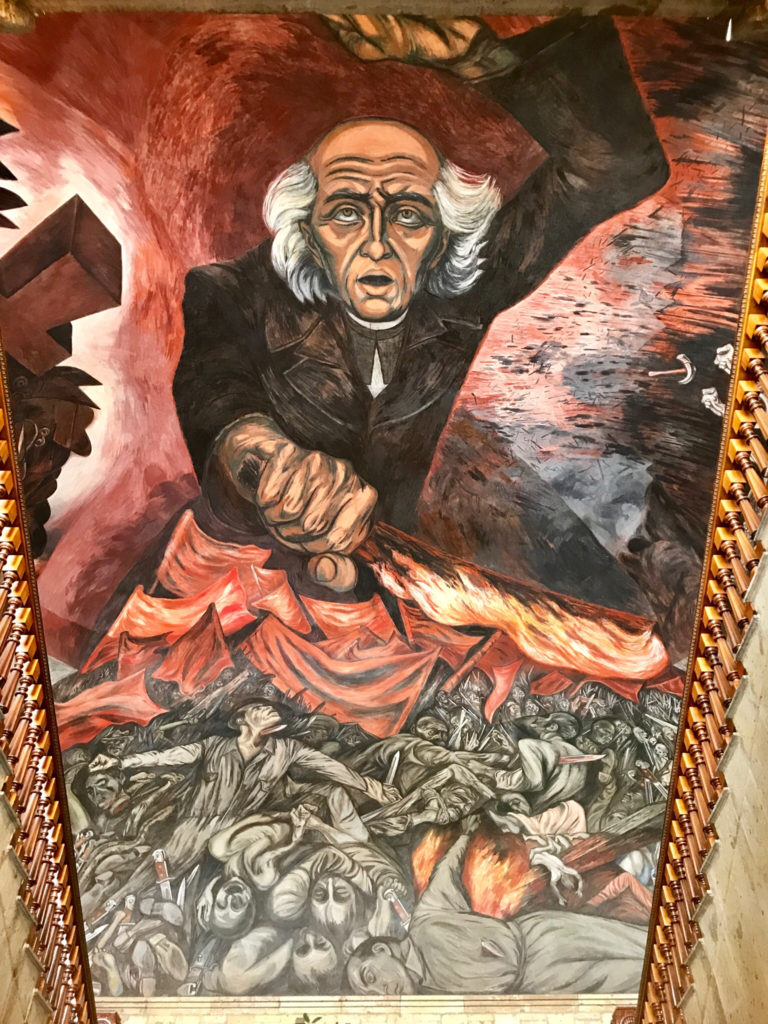
The Teatro Degollado built in the mid-nineteenth century in Neoclassical design. The main portal has a pediment with a scene in relief called “Apollo and the Muses” sculpted in marble by Benito Castañeda. Behind the theater is another plaza with a fountain called the Fuente de los Fundadores The plaza is in the exact spot where the city was founded and contains a sculpture depicting Cristobal de Oñate.
Between the Cathedral and the Hospicio is the large Plaza Tapatía Its centerpiece is the large Quetzalcoátl sculpture/fountain. Southeast of this plaza is the Mercado Libertad, also called the Mercado de San Juan de Dios, one of the largest traditional markets in Mexico.
At the far east end is the Plaza de los Mariachis and the Ex-Hospicio Cabañas. The Plaza de los Mariachis is faced by restaurants where one can hear live mariachis play, especially at night.
The Ex-Hospicio Cabañas extends along the entire east side of the Plaza This building was constructed by Manuel Tolsá beginning in 1805 under the orders of Carlos III. It was inaugurated and began its function as an orphanage in 1810, in spite of the fact that it would not be finished until 1845. It was named after Bishop Ruiz de Cabañas y Crespo. The façade is Neoclassical and its main entrance is topped by a triangular pediment. Today, it is the home of the Instituto Cultural Cabañas (Cabañas Cultural Institute) and its main attraction is the murals by José Clemente Orozco, which covers the main entrance hall. Among these murals is “Hombre del Fuego” (Man of Fire), considered to be one of Orozco’s finest works.
The murals all 37 of them portrays humanity sufferings through the centuries starting with the Spanish conquista again the uses of colors and lines separates Orozco from Rivera and Sisquieros all great Mexican muralistas.
The museum also hosts traveling exhibits, the one we saw was Equinos (horses) in paintings and sculptures amazing works. We continued our visit as we wonder aimlessly through halls connected by patios leading to more patios and passillos.
We needed to recharge our souls after watching so much suffering, so we drowned our sorrows in alcohol, we selected an eatery by the plaza facing a beautiful fountain where we were the only tourist and who knew the margaritas were 2 for 1′ nachos were order disappointed but yet it’s cheeses and chips -a the duo was playing song both en ingles and español and they were hitting it out of the park.
We continued our ramblings when we came across a free air concert at the plaza in front of the Degollado theatre. I have to confess Mariachis have never been my type of music my thought have been picked a note any note but performed by a full-size orchestra I have acquired a new appreciation.
Hailed a taxi with the most colorful driver which expressed his Mexican opinions of our “mono anaranjado” you do the translation.
Safe back in our hotel,we settled on for a deserve rest just as the sky’s open in with a torrential deluge and thundering.

